-

古典音樂就是這樣子
「古典音樂」這個行業是個什麼樣的世界?從事「古典音樂」這樣工作的人又是如何的呢?日本世界級的交響樂作曲家吉松隆打破大眾對古典音樂這一行美好的憧憬和想像,藉由生動活潑的吉松式幽默敘述古典音樂這一行不為人知的一面。 聽起來充滿音樂藝術氣質,高不可攀的古典樂作曲家,其實是無固定收入,而且不被一般社會所認同的怪異職業。財富常常與這一行無緣,收入不穩定有如打工一族,生前默默無名,死後出名本人卻早已享受不到則是常有的事。吉松隆以毫不保留的態度讓大家認識,古典樂作曲家實際上就是這麼一個令人跌破眼鏡的心酸行業。 除此之外,音樂界的指揮家、樂團首席、樂評,這些聽起來高尚風雅的職業,實際上又是如何的呢?演奏時看起來虎虎生風的演奏家,其實只是夾在作曲家與演奏者之間尷尬的「中間管理職」;首席則是樂團的隊長,帶領團員配合(反抗?)指揮家的角色;而樂評則是世上莫名其妙的職業之一,講起來也只是出一張嘴的不負責任評論家罷了。 從認識作曲家開始,藉著詼諧的筆調以及四格漫畫,吉松隆帶領讀者一步步認識音樂學的關鍵名詞、演奏家、古典音樂界種種意想不到、難以想像的趣味風貌,打破一般人的刻板印象,見識真正的古典音樂這一行。 -
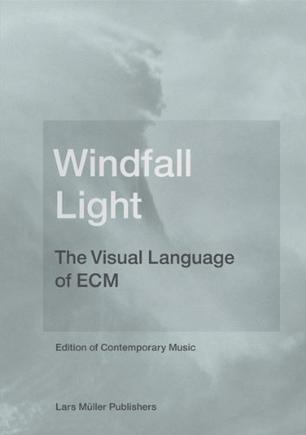
Windfall Light
Following the success of “Sleeves of Desire”, a second publication is now being devoted to the cover art of the label ECM, Edition of Contemporary Music, focusing above all on sleeve design from 1996 to the present. Since its founding in 1969, ECM has been dedicated primarily to jazz and contemporary classical music and is a leading international label in both these fields. ECM has also received acclaim for its unique cover designs, which have always been an integral part of its productions. Over the years, the collaboration between Manfred Eicher, the label’s founder and producer, and designers including Barbara Wojirsch, Dieter Rehm and Sascha Kleis has produced an aesthetic of the cover that initiates a dialogue between the photographic image and the music. The search for a cover motif from a storehouse of possible images is presented in a few examples that shed light on how these visual worlds are created and trace their significance for the music. An illustrated catalog of all of ECM’s releases completes this publication. With contributions by Geoff Andrew, Ketil Bjørnstad, Katharina Epprecht, Lars Müller and Thomas Steinfeld Design: Integral Lars Müller -
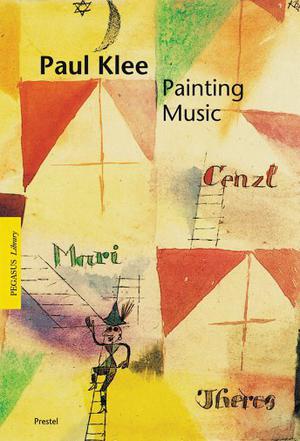
Paul Klee: Painting Music
A talented violinist as well as a painter, Klee drew much of the inspiration for his abstract art from musical rhythms and structure. Like a composer, he developed and harmonized pictorial themes, weaving a complex series of signs and symbols into his painting. In this book, the art historian Hajo Duechting focuses his study primarily on Klee's decade-long tenure at the Bauhaus, where the artist's theories and practice first merged, and where he was to develop his Colour Spectrum, Square and Polyphone painting series. Illustrated throughout with full-colour reproductions of Klee's paintings and etchings, as well as entries from his diaries, this study aims to shed light on an important aspect of Klee's work, while providing insights into his development as an abstract artist. -
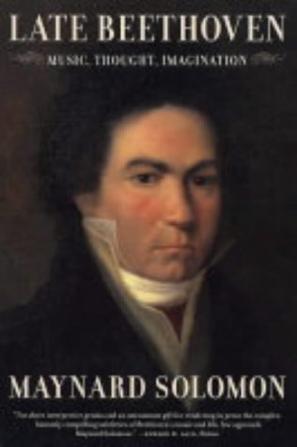
Late Beethoven
In a series of powerful strokes, the music of Beethoven's last years redefined his legacy and enlarged the realm of experience accessible to the creative imagination. Maynard Solomon's "Late Beethoven" investigates the phenomenon of the final phase, focusing especially on the striking metamorphosis in Beethoven's system of beliefs that began early in his fifth decade and eventually amounted to a sweeping realignment of his views of nature, antiquity, divinity, and human purpose. Using the composer's letters, diaries, and conversation books, Solomon traces Beethoven's attraction to a constellation of heterogeneous ideas, drawn from Romanticism, Freemasonry, comparative religion, Eastern initiatory ritual, Mediterranean mythology, aesthetics, and classical and contemporary thought. Through these often arcane sources, Beethoven gained access to a vast reservoir of imagery and ideas with the potential to expand music's expressive and communicative reach. This 'multitude of productive images,' writes Solomon, 'provided kindling for the blaze of his imagination.' "Late Beethoven" is a rich tapestry of original perspectives on Beethoven's music. Solomon sees the Seventh Symphony as a deployment of the rhythms of antiquity in an effort to revalidate the premises of the Classical world; the Ninth as an essay on the prospects and limits of affirmative, monumental endings; and the 'Diabelli' Variations as a doorway to the universe of metaphoric significances that attach to beginnings. In the Violin Sonata in G, op. 96, Solomon finds a restoration of the full range of pastoral experience that the ancient poets had known. In the Grosse Fuge he locates issues of fragmentation and reassembly, and he suggests that pivotal passages of the last sonatas evoke sacred states of being. These stimulating perspectives illuminate the inner world within which Beethoven dwelled during his last fifteen years and the ways in which his thought and music may be interrelated. Written in accessible and eloquent prose, and with numerous music examples, "Late Beethoven" is a serious contribution to understanding this miraculous quantum leap in Beethoven's creative evolution. -
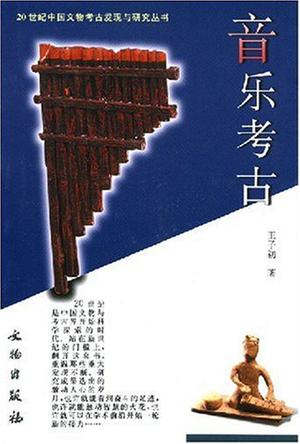
音乐考古
《音乐考古》是“20世纪中国文物考古发现与研究” 丛书的一种。该丛书由国家文物局组织出版,是世纪性总结中国文物考古经验与成果的大型著作。 音乐考古学在国际上尚是一门较新的学科,除作者前著《中国音乐考古学》之外,国际国内均罕有该学科系统的基础理论著作发表。所以《音乐考古》的出版,具有学科奠基的意义。作者主持《中国音乐文物大系》编撰工作历时16年,考察文物的足迹遍及大半个中国,积累了大量的资料和研究心得,为本书的撰写打下了坚实的基础。 本书较为系统地论证了音乐考古学学科的基础理论问题;如学科的基本概念,学科的定位,学科的研究对象,研究方法,学科发展史,等等。并较为系统地阐述了中国各个历史时期的音乐考古发现和研究成果,如实揭示了中国音乐文化的源远流长和丰富多采。 该书的出版,深受中国音乐史学、音乐考古学和广大文史教学和科研工作者的重视和欢迎。 目录 前言 一 音乐考古学 (一)音乐考古学小史 1.音乐考古学 2.音乐考古学的先驱 (二)音乐考古学方法研究 1.音乐文物分类法 2.音乐学断代法 3.音乐测音法 4.音乐文物命名法 二 音乐考古的重大发现 (一)舞阳贾湖骨笛 1.贾湖遗址和舞阳骨笛 2.舞阳骨笛的学术意义 (二)曾侯乙墓音乐文物 1.曾侯乙墓的发掘 2.曾侯乙编钟 3.曾侯乙墓编磬及其他乐器 4.曾侯乙墓音乐文物的学术意义 (三)洛庄汉墓乐器 1.洛庄汉墓乐器的出土 2.洛庄乐器的学术意义 三 出土乐器的分类研究 (一)陶制、石制乐器 1.史前乐器概述 2.陶制乐器 3.石制乐器 (二)青铜乐器 1.青铜乐器概述 2.早期的青铜乐器 3.周代乐钟 4.军旅和宴享乐器 (三)丝竹乐器 1.丝弦乐器 2.吹管乐器 四 音乐图像的分类研究 (一)墓葬和佛教音乐图像 1.墓葬中的乐舞画像 2.佛教音乐图像 3.乐舞俑 (二)乐舞饰绘和书谱 1.岩画和绘画 2.器皿饰绘 3.音乐书谱 五 音乐考古的收获和展望 (一)音乐考古的收获 1.《中国音乐文物大系》 2.《中国上古出土乐器综论》 (二)音乐考古的展望 参考文献 文摘 (一)音乐考古学小史 1.音乐考古学 考古学是根据古代人类活动遗留下来的实物史料研究人类古代情况的一门科学,它是历史科学的一个部门。音乐考古学则是根据与古代音乐艺术有关的实物史料研究音乐历史的科学,是音乐史的一个部门。音乐史属艺术史,也是历史科学的一个专门分支。 比起一般考古学来,音乐考古学有其鲜明的特殊性。这一特殊性主要体现在其研究对象上。以美术考古为例,美术考古研究的对象直接就是人类所创造的美术作品本身,如绘画、雕塑作品等。而音乐考古的对象却不可能是音乐作品本身。其一,音乐艺术是音响的艺术,其以声波为传播媒介,表演停止,声波即刻平息,音乐也不复存在。其二,音乐又是时问的艺术,真正的音乐只能存在于表演的刹那间,古代的音乐作品只能存在于表演当时的瞬间。作为音乐考古学家永远无法以看不见、摸不着的某种特定的声波为研究对象,也无法将早已逝去的历史上的音响为其直接研究对象。一些古代的乐谱也许记载了某些音乐作品,但这种以某种符号系统来记录作为音响的音乐作品的手段是苍白无力的。 -
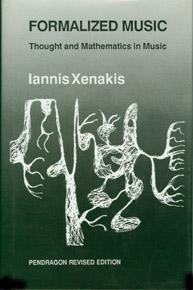
Formalized Music